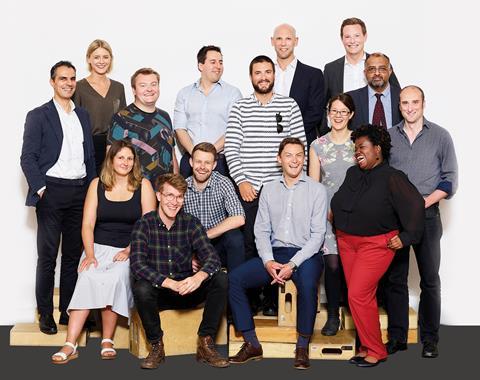

Digital transformation is the big challenge facing the construction industry – for too long it has been held back by traditional ways of operating and yet now it seems the circumstances have never been better for the mass take-up of new technologies. So, who are the people driving this revolutionary change?
Here we present our digital champions: construction professionals who think digital-first and for whom digital is ingrained and embedded in everything they do. Many of their job titles – based at big name contractors and consultants - simply did not exist a decade ago. They are the people who fully understand the potential new technologies can unlock and can visualise where construction could go next. They are also the ones who are willing to shout about digital, both in their organisations and in the wider industry, as well as point out just how far everyone still has to go to catch up with other parts of the UK economy.
This is a talented bunch, with strong opinions about how to tackle entrenched attitudes and how best to embrace the new. In short, these are the ones to watch.
All photography by Tom Campbell
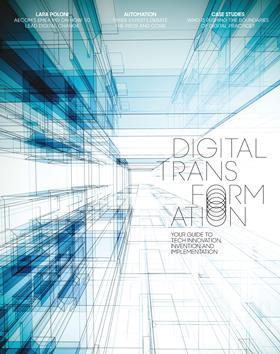
Also read: Building’s Digital Transformation special
Read interviews with Building’s digital champions: Katya Valeva (Archilizer); Steven O’Callaghan (Mace); Kostas Bachas (Orms); Anna Fiejtek (Orms); Dr David-John Gibbs (HKA); Paul Jeffries (Ramboll); Tim Kay (Multiplex); Anna Kiho (HLM Architects); Jon Leach (Aecom); Matthew Marson (WSP); Gareth Parkes (Sir Robert McAlpine); Ben Robinson (Hawkins\Brown); Emily Scoones (Ramboll); Jasper Singh (Gleeds); Toby Sortain (ISG); Will Squires (Atkins); Nelly Twumasi-Mensah (Faithful + Gould); Dr Marzia Bolpagni (Mace); Mark Boyle (Robert Bird Group); Nick Cole (Robert Bird Group); Hannah Collins (Mott MacDonald); Davide Gatti (Multiplex); Dan Hoogeveen (Purcell); Simran Kalyan (Mace); Aidan Kelly (BDP); Ruth Norman-Johnson (Ramboll); Neil Thompson (Atkins)

Listen to excerpts from our interviews with our digital champions on this Building podcast

Katya Valeva, BIM strategy consultant, Archilizer (not pictured in group photographs)
What do you do? I work mainly with architects and designers. I help with preparation of contractual documents, writing up standards for the company and preparing software solutions for the implementation of these digital solutions.
What’s holding construction back in the digital sphere? One of the problems is the timescale of construction projects. If you look at the industries that have progressed much faster digitally, their projects are so much shorter. Also, the way contracts are set up in construction means that once you start something, if it’s within your contract you are just going to keep doing it that way. There are other issues too, such as the way deadlines are set up so that people don’t have that much time to think about future-proofing their projects.
What are you excited about? I’ve seen a lot of exciting things recently, such as grabbing your iPad to have a look at a plan and then suddenly there is a building there on your scheme - it’s great. I feel like I have seen those things in sci-fi films as a child and that’s why I’m doing what I’m doing.
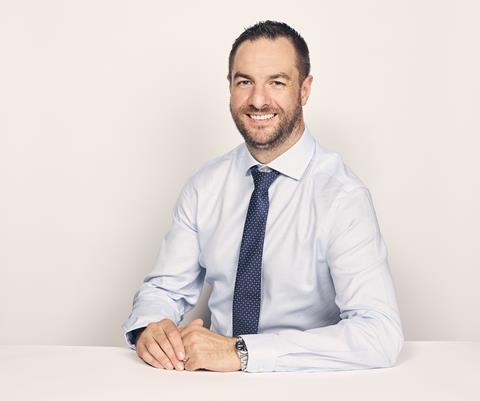
Steven O’Callaghan, digital engineering leader for residential, Mace (not pictured in group photographs)
I manage a team of seven digital managers leading them across a range of projects from social residential to high-end luxury prime residential. My work involves entails managing the modelling, the building information modelling, and the digital information processing the whole way through construction from tender, through pricing, through pre-construction services agreements, which are where we manage the client and develop the design, right the way through construction, right through to handover.
What’s holding construction back in the digital sphere? There’s a misconception that BIM and digital are a nice to have or a surplus cost. Twenty years ago, we were trying to convince people to use CAD and people were saying: “Is it an additional cost? Is it a nice-to-have?” No, it was just what you needed to do for full collaboration. Today, people still believe that modelling and clash detection and 3D are an add-on to a project and they’re not. They should be the minimum because they’re the basic ways you use technology to do your job better and more effectively. To me, it shouldn’t even be discussed as something that’s held back, it should be the modus operandi for the construction industry. We should be using virtual mechanisms to synthesise what we are going to face in the real world.
What are you working on right now and what are you excited about? Currently we are developing augmented reality to place the model into the real world so that you can see the clashes, get a feel for the space, while also being able to bring up informed information and documents in real-live time in front of your eyes from a virtual world. So it’s starting to bring Minority Report technology into the construction industry.
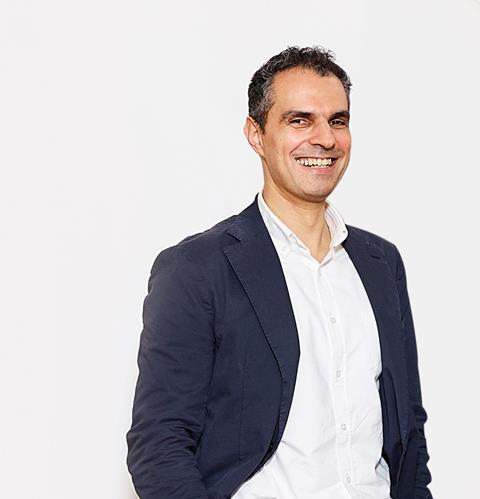
Kostas Bachas, associate, Orms
What do you do? I run a number of projects on various stages, from early design stages, feasibilities, to construction sites. I meet the clients. Depending on the stage, it can be drafting, sketching, coming up with ideas, being on site, reviewing progress on site, sitting down with teams a lot, going through their questions, going through their worries, advising on how we proceed, what’s the next step, what’s coming up, this kind of role. I have a masters in architecture technology, which involves sustainability, special structures, applications of structural engineering – bridges, domes, and technology in general.
What’s holding construction back in the digital sphere? As an industry, we are looking at each other. We are waiting for the next software to be introduced to the market by software developers, what will be the next Revit – we don’t look enough outside the industry. Things are progressing at an accelerating pace on every other aspect of technology and in every other industry. If you look in the US, industries outside our own, and see what they’re doing with artificial intelligence and how that has started to affect other industries, it makes you wonder: why are we not there?
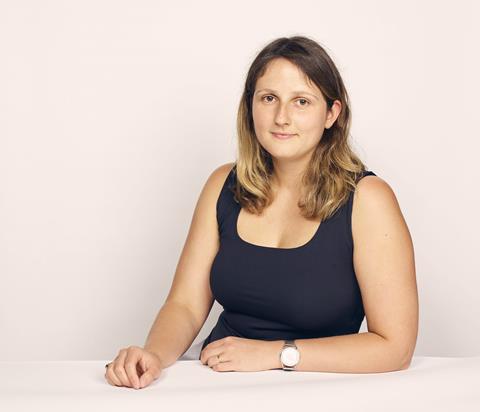
Anna Fiejtek, BIM manager, Orms
What do you do? I help people to use digital tools that we have in the office. I’m looking at how to make manuals for things we do all the time to establish processes, because you go through RIBA stages of work and do the same things all the time – drawing, specifications.
What’s holding construction back in the digital sphere? I think in architecture we’ve been doing things for hundreds of years, and for the last 50 years or so, people have been used to doing things in 2D – so if change comes, it takes time to convince people to use different software and different processes. It’s not a simple change, it really needs a lot of resource at the beginning.
What are you excited about? At the moment there’s a lot of people working on automated design and generative design – I think this is very cool, so put constraints in and you get outcomes and analysis of designs much faster.
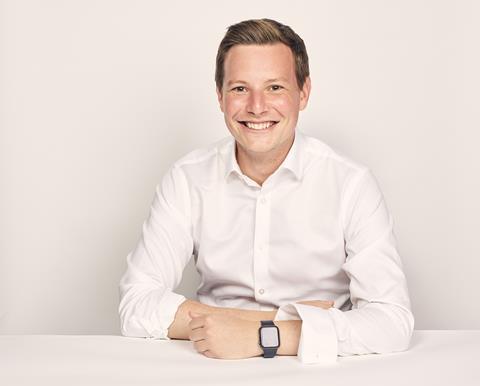
Dr David-John Gibbs, BIM advisory and dispute resolution, HKA
What’s holding construction back in the digital sphere? A big part is investment. We operate on such low margins and expect quite a lot of change to happen but when you haven’t got those profits it’s difficult to take a risk, which is what innovation is. Also, perhaps we are a bit too optimistic when we bid for things or there’s a bit of strategic buying of projects, and as a consequence we don’t have that opportunity then to reinvest and it creates a bit of a bad culture.
What are you excited about? I’m a big advocate of 4D modelling. I really like the link between construction design and time information. How do you judge project success? You’ve got time, you’ve got cost, you’ve got quality and we often create three bits of siloed information. What we want to do is bring those together to get a more coordinated approach so people get a better idea as to what’s happening on that project.
On a more futuristic note, I know people talk about generative design but advances in generative planning are also really impressive: so you can have a 3D model or 3D design and then you can use that model … it will analyse millions of different alternative solutions.

Paul Jeffries, director and head of computational design, Ramboll
What do you do? I essentially try and find ways to use computers and algorithms to design buildings better.
What’s holding construction back in the digital sphere? The main obstacles we face are not so much the technical issues but more around the attitude, culture and acceptance of technology that we see in the industry. I think we are going through a bit of a transition period at the moment. A lot of work needs to be done to help people adapt to new ways of working and trying to adapt structures for how people progress through their careers, which will need to be completely different in a few years’ time.
What are you working on at the moment and what are you excited about? Currently I am working on a piece of generative design technology called SiteSolve, which allows us to rapidly explore and optimise building designs at early stages. This is something we’ve been researching and using internally for a few years now, with great success. On one project we managed to find a client over £20m of additional revenue through optimising the site massing to provide better views. On another we are providing automated evaluation of thousands of different sites to identify those with the greatest development potential. We are now working on productising this as software, so that architects, planners and developers can get hands-on and take advantage of the power of this technology for themselves.

Tim Kay, digital manager, Multiplex
What do you do? My job is to manage everything digital on a project. I’m not head office based but I’m project based, overseeing the 3D models, all the information and attributes associated with them and all the coordination of those models.
What’s holding construction back in the digital sphere? I think the biggest weakness at the moment is the supply chain and the apportionment of risk. Basically, to make the digital transformation happen everywhere, I think the supply chain needs to be educated on what they need to do and how we can best work together collaboratively. I think better education from us as contractors is needed as we are right in the middle of it.
What are you excited about? I would say the Trimble system is one of the most exciting things at the moment, so setting out all the fit-out works based around the model. Essentially what the Trimble system does is you put a note in a model using shared co-ordinates. Once you do that then you can use a station onsite to pick your point, it will go straight to that point, and it will have a very, very, very small tolerance and it takes into account deflections of slabs and it takes into account different levels. So, everything can be set up from the model, which means we can coordinate before we go out on site and we can validate and verify those points before we install a wall and make sure everything is good.
What are you working on at the moment? I’m working on The Broadway project right now – basically the old new Scotland yard site in Westminster - it’s a mammoth job! I have a couple of other lingering projects – overseeing consultant delivery of 22 Bishopsgate and closing out the remnants of Principal Place in Shoreditch.

Anna Kiho, associate and part of the digital transformation team, HLM Architects
What do you do? I’m in charge of leading the residential mixed use sector for the business but as a side role I’m part of the digital transformations team.
What’s holding construction back in the digital sphere? Digital technology is seen as an extra rather than an integral part at the moment – actually it doesn’t take a lot of extra effort to go fully digital – it’s just that you need to have certain systems in place. A digital system is no more difficult to use but I think our clients see it as something extra they need to pay for.
What are you excited about? My personal favourite is VR – using headsets and being able to be in the space you’re designing or taking your client through a very immersive experience very early on so it takes away having to convince people of what you’re doing.
What are you working on at the moment? HLM were appointed by Clarion to develop a landmark design proposal for the Telford Place site on the south-eastern gateway to the town centre. The vision for the project is to transform what is an under-utilised brownfield site into a new vibrant urban block, enhancing public realm and pedestrian connectivity as well as delivering much-needed affordable housing to a highly accessible town centre location. As part of the engagement process with the local Planning Authority and residents of Crawley, we have been using our BIMx software to showcase the proposals in an interactive and immersive 3D environment – the approach has had brilliant feedback so far as it takes away the need to imagine what the site will transform into in the near future.
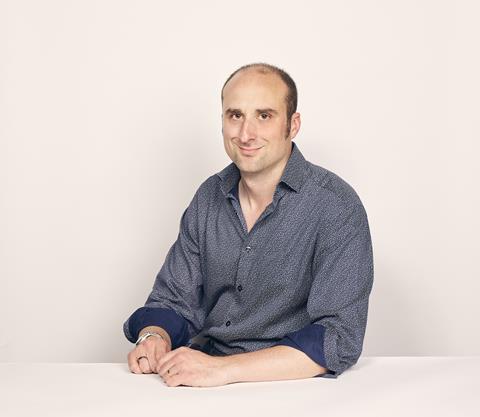
Jon Leach, director, Aecom
What do you do? I lead one of the teams in building engineering and structural engineering. I also lead our digital strategy for part of the UK and Ireland business. I also chair the Institution of Civil Engineers panel on computational design.
What’s holding construction back in the digital sphere? The change has been really slow and a lot of that is because people are using digital tools in a traditional design-and-build environment rather than rethinking how we deliver things fundamentally. We have a very fragmented industry and the way things are procured means there is a loss of intelligence along the way, with people rebuilding models all the time.
What are you working on at the moment? We’re re-shaping the role of design consultant to be more directly engaged with the fabrication and construction phases of a project. On a number of recent projects, we’ve worked closely with our clients to re-define our deliverables, including fully 3D and model-based structural engineering outputs for a major international airport and the turn-key multidisciplinary delivery of modular buildings designed for manufacture. This shift in mindset has enabled us to proactively de-risk overall project procurement and delivery, using digital tools to facilitate a seamless transfer of design, manufacture and operational data that is embedded throughout the process.

Matthew Marson, head of smart places, WSP
What do you do? I help our clients understand how they can get technology into the built environment.
What’s holding construction back in the digital sphere? Why is it that Uber was so successful in the 12 months from being nothing to everybody knows what it is? I think its to do with the amount of times they could prove that the technology works. There are millions of taxi rides each day, whereas in construction it takes four years and we are not doing anywhere near that kind of volume. There’s still a massive hesitance and it feels like a real leap of faith to get there. I just don’t think we’ve done it enough yet for people to be comfortable.
I think the industry needs to stop being a bit of an echo chamber. We are now building teams that you wouldn’t expect. For example, one of my team is a performing arts graduate but his background in understanding people and how they interact with space makes his design work so much more thoughtful than we might be able to get from an engineer. I don’t think there’s one silver bullet set of skills out there.
What are you excited about? I dont think its about new tech anymore because the stuff that we see as emerging tech, if that’s things to do with distributed ledger technologies, more mixed reality, quantum computing, etc – I don’t think it’s at a point yet where we can put it in a construction project. So the thing that will be really interesting is how we combine the stuff that we already have … that is going to have a profound change in how we work with our spaces anyway and it’s about how you design a core bit of infrastructure that is future-ready because obviously tech moves much faster than our buildings do and we need to find a way to marry those two paces of change.
What are you working on at the moment? Currently I’m working with a leading bank to create their new headquarters with the idea being that the building becomes a butler to their employees. By designing meaningful digital services with a set of infrastructure that’s future ready, we’re paving the way for an entirely new working experience.
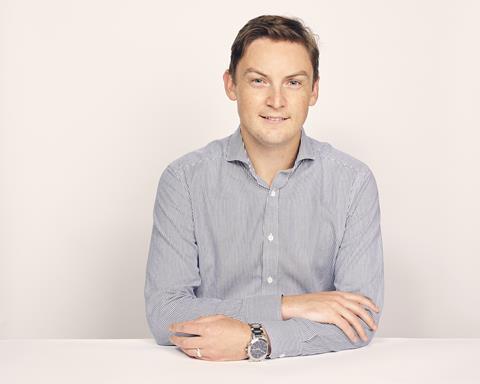
Gareth Parkes, company knowledge manager, Sir Robert McAlpine
What’s holding construction back in the digital sphere? One of the really big challenges is the amount of risk that exists within construction sites. Because people’s lives are at stake, there’s a real feeling of responsibility to make sure that we stick to things that we know work rather than being risky and trying too many new things, too many innovative things that ultimately come back to potentially harming somebody.
I think that change is already coming. I’ve been with the business for nearly three years and have seen BIM, for instance, completely take off and go from being a nice-to-have to something that is applicable across all our projects and embedded within all our projects.
What are you excited about? Interestingly I asked someone that question not so long ago and they said: “You know what, I’ve seen it all, there’s not anything that’s completely new, that’s completely cutting edge.” The way we think about collaboration, talk about collaboration, how does that work in a digital environment and how does that work as we start to share data? That’s huge, that’s absolutely massive and that’s unlocking completely new ways of thinking not only about how we act as a business but across the whole of project management. How do we deal with this exhaust plume of data? I think that’s the space that’s completely untapped at the moment.
What are you working on at the moment? The very successful Project Hack and Meetup events run by Projecting Success, which Sir Robert McAlpine sponsors, have taught us that there is considerable value to extract from federated project data using advanced analytics and ultimately AI. With Projecting Success, we have created a community of more than 3,000 people who want to explore project data analytics with us. This will shape innovation in many areas of construction. I am currently working to bring this to life on an industry-wide scale, so that we can learn from the rich seam of data produced by the projects we deliver.

Ben Robinson, digital designer, Hawkins\Brown
What do you do? The majority of my work is workflow automation, so I help the architects. If there is a job they find boring or repetitive and doesn’t involve their skill I’ll try and write software that does the job for them. That could save them anywhere from an hour to two weeks’ worth of work.
What’s holding construction back in the digital sphere? Even though technology is becoming more accessible there’s a growing skills gap between what you are actually getting taught at university and what you might need to implement in the real world. I personally don’t think you are getting skilled up at university for a job in 2020.
What are you working on right now and what are you excited about? There’s quite a lot of work at the moment on automating feasibility studies, especially for residential projects. A lot of architects are scared this will take their jobs, but I think there’s so much possibility to streamline the process and architects need to work very hard to work out how we can fit in and work with these software companies.
What are you working on at the moment? I am currently working with a software developer to deliver a web tool that will allow us to monitor the health of all our our projects live through model metric dashboards. This will allow us to proactively respond to any given health metric as soon as it takes place and before it develops into a larger issue that may affect the design team.
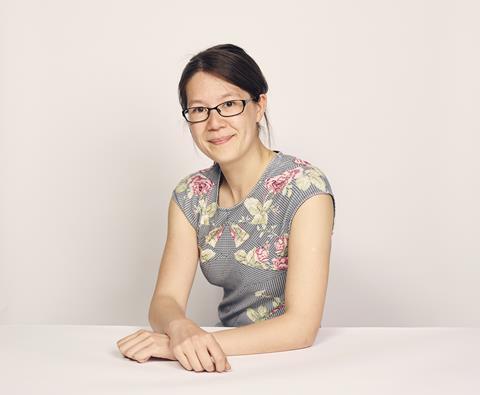
Emily Scoones, senior computational design engineer, Ramboll
What do you do? I’m involved in the development of tools and projects which help to increase digitalisation within our company.
What’s holding construction back in the digital sphere? A big part of it is mindset and changing the way we think about digitalisation. How we utilise this technology is not just to make what we do faster but to give our clients and society greater value in what we can do.
What are you excited about? There’s great technology happening on the project level where you are getting early-stage design decisions and collaboration tools that are out there. There is also the more interesting robotics and new material technologies, which will hopefully really push the industry forward once they get adapted into it.
What are you working on at the moment? I have been working on developing set of digital applications for our internal Ramboll toolkit as well as our external software, SiteSolve. These applications help to automate repetitive/laborious design processes to make them faster and provide more insight. Using these tools we are able to combine services that would traditionally be undertaken in insolation, which helps to facilitate more time for developing holistic solutions in a collaborative way.
Emily is also a member of Building’s graduate panel
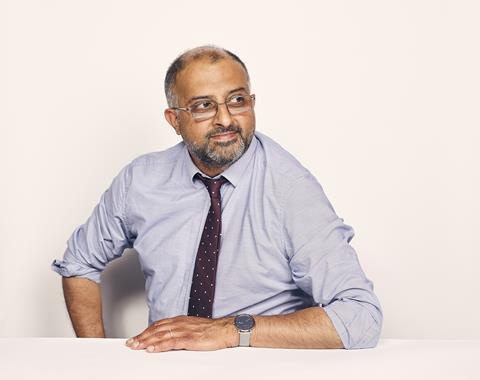
Jasper Singh, director, head of IT, UK, Gleeds
What do you do? I’m responsible for bringing innovation to the business. That could be software packages, or it could be bigger solutions like the implementation of BIM for a project.
What’s holding construction back in the digital sphere? Construction is at the very first rung of the digital revolution journey. I think we’re just one rung ahead of farming and agriculture in this space for this particular aspect. So we’ve got a long way to go. Normally on a project we have to find the lowest common denominator to make the project work – you’re only as strong as your weakest link, so whichever party is least technically advanced, that’s the level of technological maturity on that project. There are a number of other reasons why construction is so far behind. Historically it’s been quite a conservative industry, because of the sorts of things and the output that we produce. Construction is beginning to get it, very slowly. Contractors have made great leaps and bounds in their use of 3D modelling, and visualisations and resource planning on site.
What are you excited about? The use of drones is a bit of a game changer. We can now do inspections of buildings and see where the problems are – for example on the roof of a skyscraper, send a drone up there. That has saved a lot of money and a lot of effort that would have been required previously.

Toby Sortain, senior BIM manager, ISG
What do you do? I manage the strategy and implementation of BIM across the company, focusing on tenders then its use on projects.
What’s holding construction back in the digital sphere? The ongoing barriers in terms of wider adoption across the sector are a consensus about how we should be using digital and the adoption of standards.
What are you working on at the moment? The tech-led side of the business is pushing us in directions we would not have considered before and a lot of that is around data management.

Will Squires, digital lead for cities, development and aviation, Atkins
What do you do? I set the strategy for how technology influences our cities and aviation markets with a focus on how new technologies, new services, are changing the products, services and different things we can offer to our clients.
What’s holding construction back in the digital sphere? Low margin rates lead to low research and development rates, which lead to a lack of interest in tackling risk. The large majority of construction projects historically have been focused on tried and tested innovation.
If you look at the sort of function of a lot of contractors and consultants, we manage risk proactively against a budget to deliver an outcome and if you’re introducing different ways of tackling problems that introduces uncertainty. That’s inherently unattractive to a business that doesn’t necessarily have a huge amount of cash to burn against risk.
What are you excited about? Most innovation is driven by economics … it’s about which technologies are accessible at an economic price point that makes them attractive to be implementable in the construction sector. Previously, the challenge of working out how to implement a robot would be that you’d be spending twice, three-times, five-times what you’d spend on a skilled worker. Now the cost has changed, we can throw 10 robots at a problem.

Nelly Twumasi-Mensah, business projects and change lead, Faithful + Gould
What’s holding back construction in the digital sphere? I think there are a number of factors. I think there is an element of people not fully understanding the breadth of what can be done with digital. I think there’s a misunderstanding of what digital means, so depending on who you ask they might say digital is BIM, they might say AR or VR.
As an industry it’s so different, so from a contractor’s perspective to a consultant’s perspective digital could mean slightly different things but we lump it all together and say digital is happening!
What are you excited about? Something that Atkins are developing at the moment is the ability for machine learning. I’ve seen an AI platform that can recognise defects in a road, so it can go along and actually measure and identify those cracks – it becomes an inspection tool that is really accurate.
What are you working on right now? One of the interesting things I am working on at the moment involves transitioning our ways of working into the cloud. It is really exciting taking well-established processes and routines and re-imagine them in ways that maximise collaboration and agility. Ensuring that these new ways of working deliver tangible business value is important. However, it is just as important that the change programme for the transition is sustainable and it actually embeds changes to ways of working that have been in practice for decades.

Dr Marzia Bolpagni, BIM advisor, Mace
What do you do? I provide consultancy on digital transformation including BIM. Part of my role is to really explain that digital transformation methodology and processes are really for everyone – not just for experts. There is a piece that is about training based on different roles. I’m also assistant editor of the BIM Dictionary, which is a BIM tool that is available online for free and has been translated into 21 languages. International companies can use it for training or to work across different hubs.
What’s holding construction back in the digital sphere? It needs to start from education, the way people teach you to be an architect, teach you to be an engineer, teach you to be a surveyor. It’s still traditionally, not digitally, led. So, when people enter the industry they start to do it in an old-fashioned way as there is not the digital skillset.
What are you working on at the moment, and what are you excited about? At the moment I am helping several clients including the UK Defence Infrastructure Organization (DIO), Ministry of Justice (MoJ) and Department for Education (DfE) in setting their requirements in a machine readable way to automatically inform the supply chain and create rules to check if the deliverables are in compliance with their requirements. This allows consistency between requirements and deliverables reducing time in producing and checking information.

Mark Boyle, global design director, Robert Bird Group
What do you do? I review all our jobs in our business, in most countries, and I am also responsible for our digital roll out of how we improve ourselves internally, in how we approach digital technology.
What’s holding construction back in the digital sphere? The thing with a digital tool is that it doesn’t just give us a small improvement, it gives us a huge improvement very quickly, so you can invest in a particular project and get a real time saving on the same job – you have just got to be brave and take that first step. I think the low-fee environment hasn’t helped, so that drives us down. Because it’s a much more fractured industry and it does require people to invest in technology and hardware and infrastructure. I think we’re getting to a tipping point in the industry where we’re seeing people do these things and making a real change – and if we don’t do it, we’ll get external disruptors, digital innovators will come into our industry and change it from the outside. That’s a real danger I see.
What are you excited about? We’ve recently been using optimisation tools. They’re called genetic algorithms and they are used to optimise multifaceted problems. When you applied them to some mundane jobs, it wasn’t groundbreaking, it didn’t change the whole project, but it did make a marginal gain – it knocked off 10% reinforcement. If every job did that, that’s a huge saving in embodied carbon for our industry.
Another good example is that we had the launch of Prism last month, an open source modular design tool, which I’m quite excited about. We do a lot of modular jobs and the idea of that tool is to bring standardisation to these offsite manufactured modulars. It breaks down this tech – it makes everybody conform to the same standard, so we can all have assurity, we can interchange suppliers, that’s what’s missing in the modular space right now.
What are you working on at the moment? On the design of One Waterloo, we have a 30-storey bridge building supported on a +100m-long span structure. We are using digital tools extensively, from inspiration on concepts using topology optimisation, rapid appraisal of tonnage and buildability using design automation and movement control and tolerance assurity using data analytics. These are all essential tools to deliver a highly technical project, also allow rapid working and are a pleasure to use.
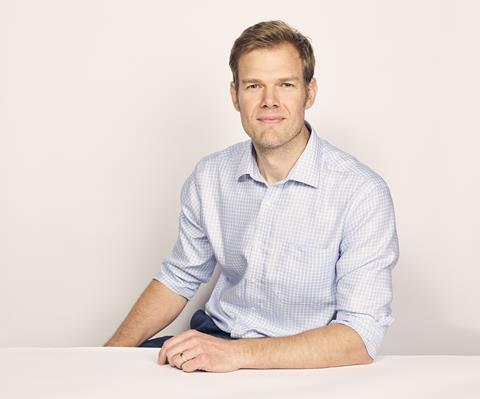
Nick Cole, associate director, Robert Bird Group
What do you do? I’m a structures team leader, lead a team of 15 people, but I’m also part of our digital transformation within the company, looking at all the various processes that we do that’s part of the engineering design, how we link them together, and how we increase efficiency in those workflows.
What’s holding construction back in the digital sphere? It almost surprises me. The people that are digital adopters and really promote the technology tend to work in fairly small circles so you surround yourself with other people that are likeminded, but the industry as a whole doesn’t adopt those digital technologies unanimously. There’s quite an intensive learning process to that and it undoubtedly adds cost to the project, so that’s a big holdback to a lot of people – it takes time to change the mindset but also learn to use new tools.
What are you excited about? Recently I was introduced to a tool called Dalux viewer, which is essentially a mobile BIM viewer which has integrated augmented reality, so you can actually go to sites, point your phone which has an offline stored BIM model in it, and it will overlay the BIM model with the real structure, as a free download with the app.
What are you working on at the moment? Our plan for the digital transformation of the business is starting to deliver really exciting results across a wide range of projects. We are using parametric modelling and automation tools, typically used for highly complex jobs, to enable us to deliver more conventional projects more efficiently. Where possible we are also factoring in construction considerations into these processes to ensure that optimised designs are developed within real world constraints such as construction sequence or piece size limits.
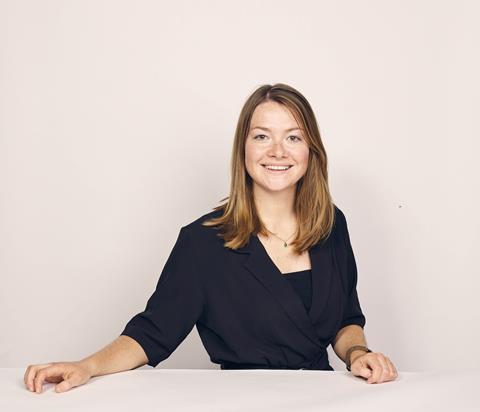
Hannah Collins, information consultant, Mott MacDonald
What do you do? I work with a range of clients from different sectors like water, transport and energy and I help them make sense of the data that they’ve got. So they might be collecting data on how their assets are performing or the performance of other bits and bobs that they’ve got going on so I help them process that and actually make useful information out of that data. A large part of my work is also digital transformation so that’s helping clients adopting technologies to help them be more productive and benefit from cost savings and efficiencies.
What’s holding construction back in the digital sphere? A large factor is openness to change and the pace of change.
What are you excited about? I’m fascinated by drones. Each day, I find out about new ways drones can be used in maintenance of assets and within the infrastructure industry by users or operators – it results in loads of things. You can map out what’s going on with a city for a digital twin or you can keep track of how well your asset’s performing and where it needs maintaining. For example, in the rail industry drones can be used to survey the track and see where foliage might need cutting off the track.

Davide Gatti, digital manager, Multiplex
What do you do? As a digital manager, I define the requirements for our consultants and subcontractors in terms of digital modelling.
What’s holding construction back in the digital sphere? The sector needs to give some simple direction, not over-complicate the requirements to the subcontractors, just try to keep it simple and also try to standardise a bit what we ask. Sometimes we change from one project to another and even internally we struggle a bit because each project is different so we have to redefine everything and go through the process again and again.
What are you excited about? One of the technologies we are introducing is digital setting out. It allows us to go on site and set out any fittings, elements, walls, anything, through the use of a machine. The machine reads points that are included in the 3D model … it’s about five times faster than a traditional setting up.
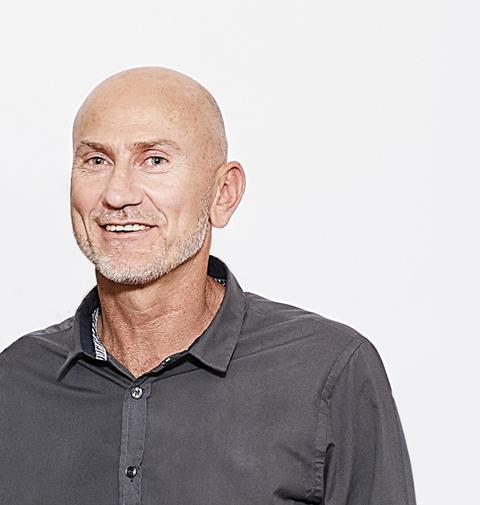
Dan Hoogeveen, digital design manager, Purcell
What do you do? The role encompasses the application of technology and forming a best practice in terms of how to assist the staff in the way they use the technology.
What’s holding construction back in the digital sphere? One of the things that I personally feel is holding back the digital agenda is the procurement process of the contractors and their connection to subcontractors. If you look at the comparison between the construction industry and the automotive industry it’s quite a different set-up – there needs to be a more joined-up approach between the actual subcontractor groups and the main contractors into bigger vehicles of joint investment to make digital investment happen.
What are you working on right now and what are you excited about? We see a lot of connection to photogrammetry [the science of making measurements from photographs] and how that’s being realised, alongside its connection to building projects and being able to synchronise the model information with the photographic information in terms of recording our digital assets. It’s an amazing tool.

Simran Kalyan, BIM manager, Mace
What do you do? I bring the design teams together on a project, and we have co-ordination sessions where we can discuss ideas and solutions to potential problems, because a lot of the design teams work in isolation and so they’re not aware of where services are going versus where the structure might go. That’s one aspect of my job – the second aspect of it involves a project where we’re digitalising the documentation being captured on site. We digitalise that process so we don’t have paperwork flying around and it’s easy to locate, and if a dispute ever occurred we could locate these documents quite easily.
What’s holding construction back in the digital sphere? The biggest challenge I face is cultural change, there’s just not enough upskilling of who we need to participate in this digital experience. A lot of people are not comfortable with technology and IT in general, and you have a lot of negativity – people who don’t get it will just knock it back and not embrace it. The newer generation, the younger people, are a bit more familiar in using technology and should start to lead the way in the right direction.
What are you working on right now and what are you excited about? There are a few impressive tools that we currently have on the project that I’m working on. We have a laser scanner that goes around with a 360° camera that captures what’s getting built from week to week – we can see the progress and it’s all filed according to the area of the building. We can select any one of the 365 apartments, pick a time of day throughout the year and see what had happened in that apartment – for instance, who has gone in. So that also covers us for any legal disputes – I thought that was quite phenomenal. The scanner is also able to pick up what a wall is and what a floor is and whether things are in the right place against what the model says, so that’s really intelligent.
New technology – I’m interested about how robotics are starting to come into play. We should really pursue ideas, especially with Brexit happening, labour, we might not have so much coming from the EU. For the facades that we’re working on now, it would be really good if we could have robotic arm that could build our facade instead of having labour. Just playing with ideas like that – I’d like to see more in the UK, I’ve seen internationally 3D printing of houses and buildings but I don’t see much in the UK.

Aidan Kelly, digital engineering lead, BDP
What do you do? I work in the environmental engineering group. I lead the implementation of our digital strategy at BDP. We are looking to use all the digital tools we have available to implement better design options.
What’s holding construction back in the digital sphere? Information silos. There’s so much interesting stuff going on in so many pockets of the industry. It could be large consultancies, small consultancies, consultancies that may not even realise what they are doing is relevant to the industry. We are already seeing that with the video game industry and the building services industry. They are using what is effectively the same ones and zeros to produce what is essentially the same product.
What are you excited about? The most cutting-edge thing I have seen is a robot that climbs lift shafts and constructs lift shafts completely autonomously so once it is set up in a lift shaft it then just goes off and builds the entire lift shaft itself. It’s terrifying and brilliant at the same time.
What are you working on right now? We’ve recently taken to using virtual reality a lot more, which really helps our engineers and designers to get a much better appreciation of the buildings we design, as well as provide a much more engaging way for stakeholder engagement and solving co-ordination issues. Taking this all the way through to construction stage, we have been using 360° cameras to create virtually navigable maps of the developing building that can be compared to the modelled design.

Ruth Norman-Johnson, director, Ramboll
What do you do? My role is about developing digital products so that we can serve our clients differently. This includes things like providing software, accessing our expertise or finding new ways to consult that leverages technology.
What’s holding construction back in the digital sphere? I think there are lots of challenges in the construction sector and some of them are in the way we procure projects. We are very traditional; we’ve worked on hours and selling our time for a long time and that’s the way people are used to working with us. We have to change that. We have got to start talking about the value we create for clients rather than the hours we will spend doing a service for them.
What are you excited about? There’s a lot going on in the space of early decision making and early stages in projects where there is very little data normally. You are making decisions based on judgment rather than what you really know. There are a number of platforms out there now that are bringing together data and early analytics to help to understand what to do with land and how to move development forward in a much more informed way.
What are you working on at the moment? I work on Ramboll’s new digital products, in particular SiteSolve which is a digital tool to generate and evaluate early stage building massing options in real time, with real analytical insight. This is exciting because it allows our clients to access our expertise in a whole new way, and to understand their risks and opportunities earlier on in a project than was previously possible, whilst also unlocking new mutually beneficial business models.

Neil Thompson, director of digital construction, Atkins
What do you do? My role splits into three categories. One is about how the digital landscape affects our market, what we offer, creating new opportunities from the available technologies; the second part is about client advisory – so going to speak to critical infrastructure clients about digital technology, how it impacts them and how they can take steps to improve their business processes or change how they go to market for procurement; and then the third category is around our information management capability both internally and externally.
What’s holding construction back in the digital sphere? It boils down to two root cases; one is trust and the human condition of resistance to change in general. What’s consistent across the economy in general, not just in construction, is this underlying mistrust of technology. It’s an interesting paradox because if you look at people’s personal lives, they are very technology based but it hasn’t transitioned into people’s professional lives. They have iPhones, they interact digitally, the way that they navigate their car, the way that they do digital banking, digital televisions, how they take pictures, how they share. Your average person would have a whatsapp account for example and they’re communicating on an individual level using an encrypted service.
I don’t think it just boils down to digitalness, my belief is that the built environment is sort of the foundation of what we do from an economy perspective, it’s like the operating system of an economy. With the digital world we can have 3D environments, we can have these immersive experiences that can put people into what they look and feel like so that they can understand the joint vision of what the future of infrastructure would be like.
What are you working on right now and what are you excited about? One of the things that I’m working with that I’m quite passionate about is a thing called collaborative robots. Robotics has been around for ages, but an interesting thing has happened in recent times with a thing called collaborative robotics. Robots in general are dangerous machines, they generally can’t go near humans because they are huge and very powerful and can cause a lot of harm. Collaborative robots are designed to work with people within the workplace. It’s actually augmenting the repetitive parts that skilled trades still do with a collaborative robot.

You can listen to Neil on this Building podcast: What can construction learn from the music and gaming industries?
Interviews by Jamie Harris, Jordan Marshall and Jonathan Owen. Photography by Tom Campbell


























No comments yet